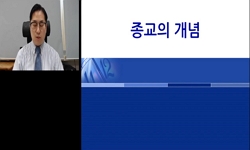1995년 6월에서 1995년 12월까지 국립서울정신병원및 한양대학병원 신경정신과에 입원하여 DSM-III-R의 진단기준에 의해 정신분열증으로 진단된 환자 중 망상을 나타낸 120명을 대상으로 종교성...
http://chineseinput.net/에서 pinyin(병음)방식으로 중국어를 변환할 수 있습니다.
변환된 중국어를 복사하여 사용하시면 됩니다.
- 中文 을 입력하시려면 zhongwen을 입력하시고 space를누르시면됩니다.
- 北京 을 입력하시려면 beijing을 입력하시고 space를 누르시면 됩니다.
https://www.riss.kr/link?id=A1996749
- 저자
- 발행기관
- 학술지명
- 권호사항
-
발행연도
1997
-
작성언어
Korean
-
주제어
Religious orientation ; Delusion ; 정신분열증 ; Schizophrenia ; 종교성향 ; 망상 ; Religion ; 종교
-
KDC
513.85
-
등재정보
KCI등재
-
자료형태
학술저널
- 발행기관 URL
-
수록면
416-432(17쪽)
- 제공처
- 소장기관
-
0
상세조회 -
0
다운로드
부가정보
국문 초록 (Abstract)
1) 대상군의 70%가 종교를 갖고 있었으며, 분포는 기독교가 가장 많았고, 천주교, 불교, 기타의 순으로 우리나라 일반인구에 비하여 큰 차이가 없었다.
2) 대상군의 종교성향은 친종교적 성향이 가장 높았으며, 이것은 일반인을 대상으로 하였던 이전의 연구들에 비하여 2배이상 높은 수준이었던 반면, 외현적 성향은 이전의 연구들에 비하여 현저히 낮아서, 정신분열증으로 인하여 외현적 성향으로부터 친종교적 성향으로 종교성향의 변화가 있음을 추정할 수 있었다.
3) 종교군에서는 친종교적 성향과 내재적 성향이 높게 나타난 반면, 비종교군에서는 외현적 성향과 반종교적 성향이 높게 나타나, 종교군과 비종교군에서 각각 구성원의 종교적 태도가 동일하지 않음을 알 수 있었다.
4) 종교의 종류와 종교성향을 보면 기독교에서는 내재적 성향이 높고, 외현적 성향은 낮았던 반면, 불교에서는 외현적 성향이 타종교에 비하여 현저히 높았고, 기타군에서는 친종교적 성향이 높게 나타났다.
5) 망상과 종교 및 종교성향의 관계에서는 다음의 몇가지 특성을 나타내었다.
첫째, 죄책망상은 외현적 성향에서 가장 높았으며, 친종교적, 내재적의 순으로 나타나 이전의 연구에서 죄책감이 외현적, 반종교적, 친종교적, 내재적 성향의 순으로 나타난다는 결과와 유사한 경향으로 망상에 반영되고 있음을 보여주었다.
둘째, 종교나 초자연에 관한 주제는 내재적 성향에서 가장 높고, 반종교적, 친종교적, 외현적 성향의 순으로 나타난 반면, 현실적인 주제들은 외현적 성향이 다른 성향에 비하여 월등히 높게 나타났다.
셋째, 종교군에서는 관계망상과 조정망상이 높았던 반면, 비종교군에서는 좨책망상이 높았다. 이것으로 종교가 심리적 성숙을 돕고, 죄책감의 승화나 배출의 통로가 되고 있음을 추정 할 수 있음을 추정할 수 있었다.
네째, 불교도에서는 관계망상과 죄책망상이 높게 나타난 반면, 기독교와 천주교에서는 조정망상이 높았고, 기타군에서는 신체망상이 높게 나타나 종교의 특성이 망상의 내용에 영향을 미친다는 것을 짐작할 수 있었다.
이상과 같은 소견을 종교 및 종교성향과 망상이라는 관점에서 논의하였다.
1995년 6월에서 1995년 12월까지 국립서울정신병원및 한양대학병원 신경정신과에 입원하여 DSM-III-R의 진단기준에 의해 정신분열증으로 진단된 환자 중 망상을 나타낸 120명을 대상으로 종교성향과 망상에 대하여 조사하였고, 종교성향을 각종 인구학적 및 임상적 변인과 망상의 내용별로 비교분석하여 다음과 같은 결과를 얻었다.
1) 대상군의 70%가 종교를 갖고 있었으며, 분포는 기독교가 가장 많았고, 천주교, 불교, 기타의 순으로 우리나라 일반인구에 비하여 큰 차이가 없었다.
2) 대상군의 종교성향은 친종교적 성향이 가장 높았으며, 이것은 일반인을 대상으로 하였던 이전의 연구들에 비하여 2배이상 높은 수준이었던 반면, 외현적 성향은 이전의 연구들에 비하여 현저히 낮아서, 정신분열증으로 인하여 외현적 성향으로부터 친종교적 성향으로 종교성향의 변화가 있음을 추정할 수 있었다.
3) 종교군에서는 친종교적 성향과 내재적 성향이 높게 나타난 반면, 비종교군에서는 외현적 성향과 반종교적 성향이 높게 나타나, 종교군과 비종교군에서 각각 구성원의 종교적 태도가 동일하지 않음을 알 수 있었다.
4) 종교의 종류와 종교성향을 보면 기독교에서는 내재적 성향이 높고, 외현적 성향은 낮았던 반면, 불교에서는 외현적 성향이 타종교에 비하여 현저히 높았고, 기타군에서는 친종교적 성향이 높게 나타났다.
5) 망상과 종교 및 종교성향의 관계에서는 다음의 몇가지 특성을 나타내었다.
첫째, 죄책망상은 외현적 성향에서 가장 높았으며, 친종교적, 내재적의 순으로 나타나 이전의 연구에서 죄책감이 외현적, 반종교적, 친종교적, 내재적 성향의 순으로 나타난다는 결과와 유사한 경향으로 망상에 반영되고 있음을 보여주었다.
둘째, 종교나 초자연에 관한 주제는 내재적 성향에서 가장 높고, 반종교적, 친종교적, 외현적 성향의 순으로 나타난 반면, 현실적인 주제들은 외현적 성향이 다른 성향에 비하여 월등히 높게 나타났다.
셋째, 종교군에서는 관계망상과 조정망상이 높았던 반면, 비종교군에서는 좨책망상이 높았다. 이것으로 종교가 심리적 성숙을 돕고, 죄책감의 승화나 배출의 통로가 되고 있음을 추정 할 수 있음을 추정할 수 있었다.
네째, 불교도에서는 관계망상과 죄책망상이 높게 나타난 반면, 기독교와 천주교에서는 조정망상이 높았고, 기타군에서는 신체망상이 높게 나타나 종교의 특성이 망상의 내용에 영향을 미친다는 것을 짐작할 수 있었다.
이상과 같은 소견을 종교 및 종교성향과 망상이라는 관점에서 논의하였다.
다국어 초록 (Multilingual Abstract)
Methods : Subjects were 120 schizophrenic patients. Diagnostic criteria used in this study was DSM-III-R. Religious orientations were assessed with the Intrinsic and Extrinsic Religious Orientation Scale. Demographic data, religious data and contents of delusion were also analyzed.
Results :
1) Distribution and prevalence of religious affiliations were similar to those of general population in Korea.
2) Religious orientations of the schizophrenic patients changed from the "extrinsic" attitude to the "proreligious" attitude as time passed.
3) Prominent religious orientations were different according to religious affiliation : The "proreligious" orientation and the "intrinsic" orientation were dominant in the religious group, whereas the "extrinsic" orientation and "antireligious" orientation were dominant in the nonreligious group.
4) Religious orientations were different according to the types of religions : The "intrinsic" orientation was dominant in Protestantism and Catholicism, the "extrinsic" orientation was dominant in Buddhism and the "proreligious" orientation was dominant in other type of religious group.
5) Schizophrenic delusio and religious factors showed several characteristic relations : First, it was suggested that religion facilitated the psychological maturation and served as a ventilating pathway of guilty feeling. Second, schizophrenic delusion seemed to be affected by the types of the religions. Buddhism group dominantly presented delusion of reference and of guilt, whereas Protestant and Catholic groups dominantly presented delusion of being controlled. Other groups of religion dominantly presented somatic delusion. Third, delusion of guilt was most prevalent in the "extrinsic" attitude and
followed by the "proreligious" and "intrinsic" attitudes. It was similar to the previous study that guilty feeling was most prevalent in the "extrinsic" attitude in the ordere of the "antireligious", the "proreligious", and the "intrinsic" attitude.
Fourth, religious and supernatural themes of delusion were most dominant in the
"intrinsic" attitude, whereas realistic themes of delusion were most dominant in the "extrinsic" attitude.
Conclusion : These results suggest that religious orientation and other religious factors seem to affect delusion formation and mental health in schizophrenic patients.
Objectives : The purpose of this study was to evaluate the characteristics of religious orientation and religious life pattern in schizophrenic patients and their relationships to the types and themes of delusion. Methods : Subjects were 120 schizop...
Objectives : The purpose of this study was to evaluate the characteristics of religious orientation and religious life pattern in schizophrenic patients and their relationships to the types and themes of delusion.
Methods : Subjects were 120 schizophrenic patients. Diagnostic criteria used in this study was DSM-III-R. Religious orientations were assessed with the Intrinsic and Extrinsic Religious Orientation Scale. Demographic data, religious data and contents of delusion were also analyzed.
Results :
1) Distribution and prevalence of religious affiliations were similar to those of general population in Korea.
2) Religious orientations of the schizophrenic patients changed from the "extrinsic" attitude to the "proreligious" attitude as time passed.
3) Prominent religious orientations were different according to religious affiliation : The "proreligious" orientation and the "intrinsic" orientation were dominant in the religious group, whereas the "extrinsic" orientation and "antireligious" orientation were dominant in the nonreligious group.
4) Religious orientations were different according to the types of religions : The "intrinsic" orientation was dominant in Protestantism and Catholicism, the "extrinsic" orientation was dominant in Buddhism and the "proreligious" orientation was dominant in other type of religious group.
5) Schizophrenic delusio and religious factors showed several characteristic relations : First, it was suggested that religion facilitated the psychological maturation and served as a ventilating pathway of guilty feeling. Second, schizophrenic delusion seemed to be affected by the types of the religions. Buddhism group dominantly presented delusion of reference and of guilt, whereas Protestant and Catholic groups dominantly presented delusion of being controlled. Other groups of religion dominantly presented somatic delusion. Third, delusion of guilt was most prevalent in the "extrinsic" attitude and
followed by the "proreligious" and "intrinsic" attitudes. It was similar to the previous study that guilty feeling was most prevalent in the "extrinsic" attitude in the ordere of the "antireligious", the "proreligious", and the "intrinsic" attitude.
Fourth, religious and supernatural themes of delusion were most dominant in the
"intrinsic" attitude, whereas realistic themes of delusion were most dominant in the "extrinsic" attitude.
Conclusion : These results suggest that religious orientation and other religious factors seem to affect delusion formation and mental health in schizophrenic patients.
동일학술지(권/호) 다른 논문
-
향정신성 약물이 혈청 지질, 지단백 및 아포지단백 농도에 미치는 영향
- 大韓神經精神醫學會
- 유승호
- 1997
- KCI등재
-
- 大韓神經精神醫學會
- 李定均
- 1997
- KCI등재
-
- 大韓神經精神醫學會
- 박희관
- 1997
- KCI등재
-
Clozapine 투여후 설사와 혈소판 감소증이 나타난 환자 1례
- 大韓神經精神醫學會
- 김진희
- 1997
- KCI등재





 RISS
RISS 스콜라
스콜라







